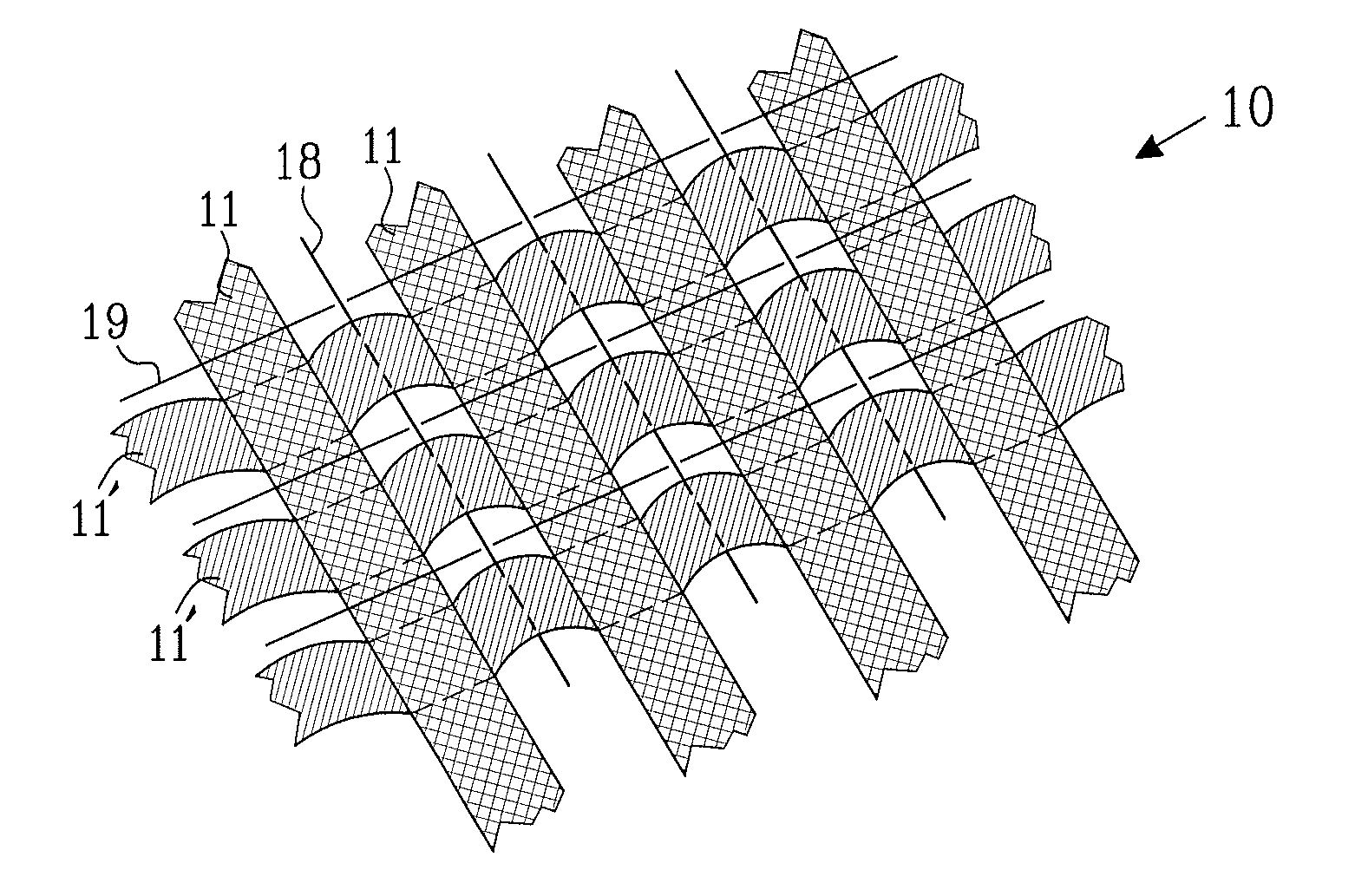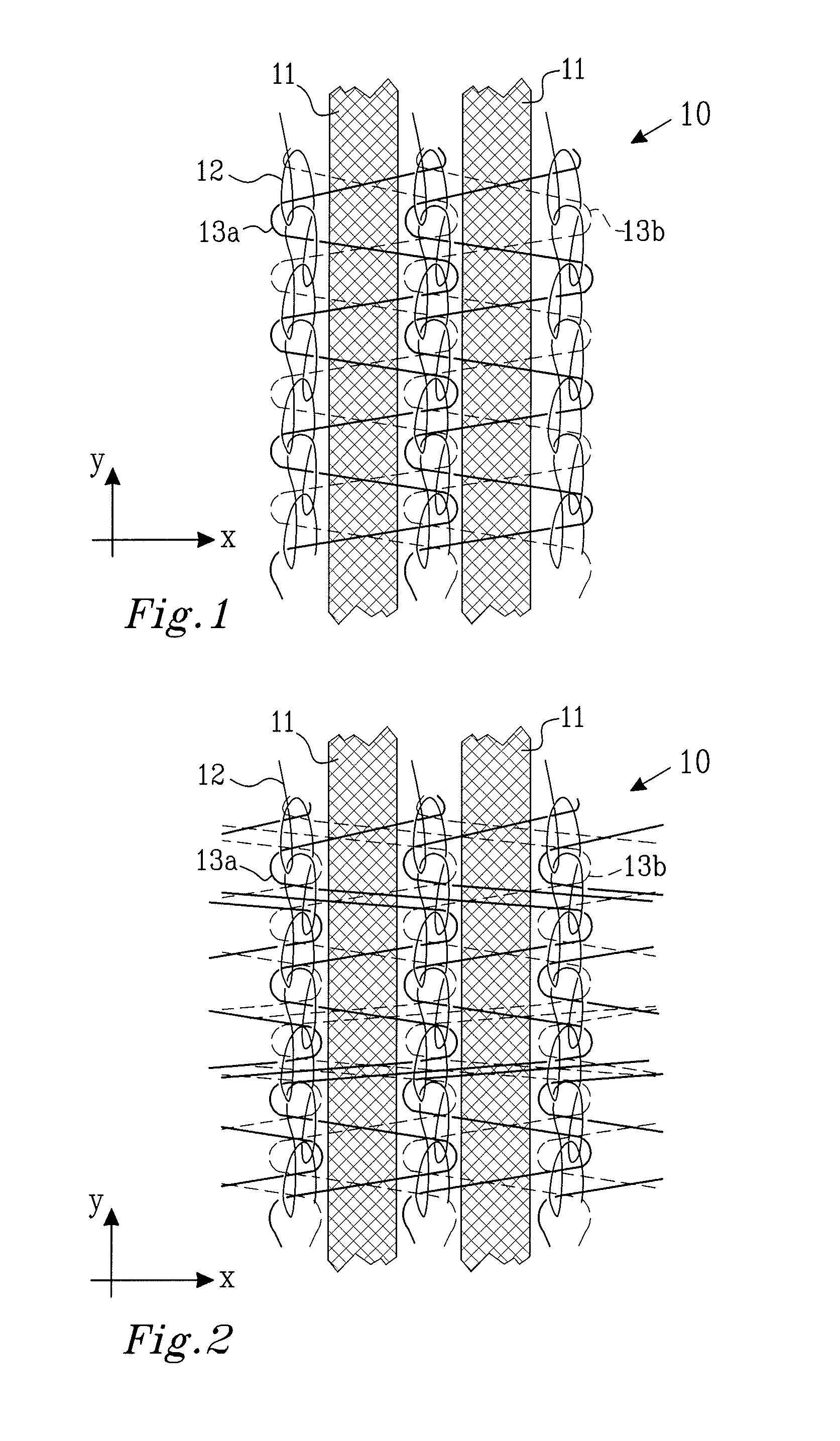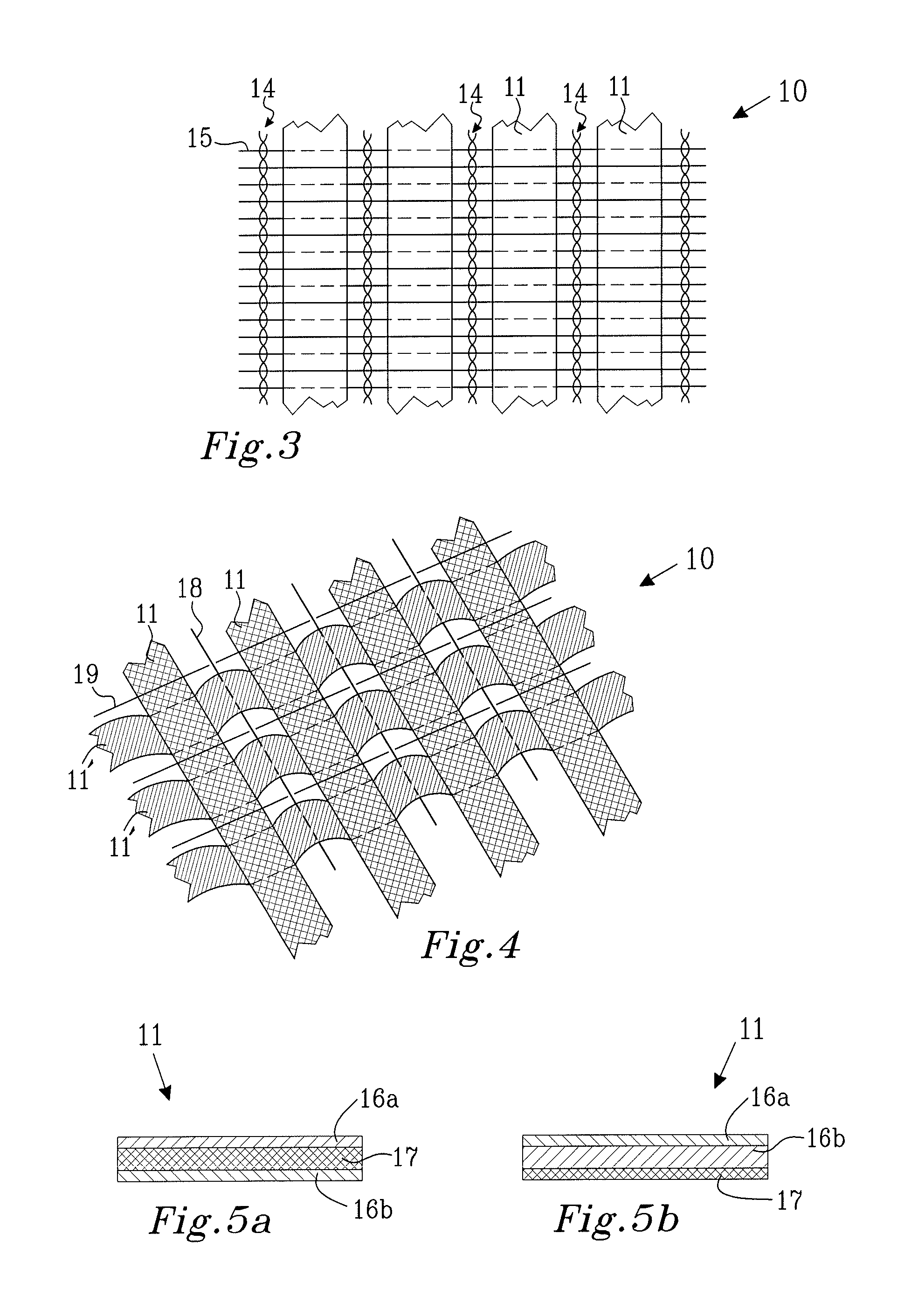Greenhouse screen
a technology of greenhouse screen and screen, which is applied in the direction of protective fabrics, ornamental textile articles, knitting, etc., can solve the problems of increasing the amount of light allowed, the heat buildup under the screen, and the increase in the use of supplementary lighting in greenhouses. achieve the effect of reducing the heat buildup
- Summary
- Abstract
- Description
- Claims
- Application Information
AI Technical Summary
Benefits of technology
Problems solved by technology
Method used
Image
Examples
example 1
[0070]One example of a greenhouse screen according to the invention is a woven or knitted screen comprising plastic strips of Hostaphan WBW 40 from Mitsubishi Polyester Film Gmbh, Wiesbaden, Germany, which is a test material, not yet commercially available. The film has a thickness of 40 μm. The film is a three-layer polyester film comprising two outer white layers and a middle black layer. The white layers contain TiO2 and the black layer contains carbon black and TiO2. The white layers have a thickness around 7 μm. The layer thicknesses and particle concentrations are within the ranges described in this application.
[0071]A warp-knitted screen was produced of strips of this film connected by a yarn framework comprising longitudinal warp threads and transverse connection threads as illustrated in FIG. 1. The longitudinal warp threads were black PET yarn and the transverse connection threads were transparent PET yarn. The strips are arranged closely edge to edge.
[0072]The screen has ...
example 2
[0073]Another example of a greenhouse screen according to the invention is a woven or knitted screen comprising plastic strips of Hostaphan WWB 36 from Mitsubishi Polyester Film Gmbh, Wiesbaden, Germany, which is a test material, not yet commercially available. The film has a thickness of 36 μm. The film is a three-layer polyester film with the following composition: It comprises two white layers adjacent each other and a black layer. The white outer layer contains TiO2, the white middle layer contains TiO2 and the black layer contains carbon black. The white outer layer and the black layer each has a thickness of 5.5 μm and the white middle layer has a thickness of 25 μm. The layer thicknesses and particle concentrations are in the range described in this application.
[0074]A warp-knitted screen was produced of strips of this film connected by a yarn framework comprising longitudinal warp threads and transverse connection threads as illustrated in FIG. 1. The longitudinal warp threa...
PUM
| Property | Measurement | Unit |
|---|---|---|
| Length | aaaaa | aaaaa |
| Fraction | aaaaa | aaaaa |
| Fraction | aaaaa | aaaaa |
Abstract
Description
Claims
Application Information
 Login to View More
Login to View More - R&D
- Intellectual Property
- Life Sciences
- Materials
- Tech Scout
- Unparalleled Data Quality
- Higher Quality Content
- 60% Fewer Hallucinations
Browse by: Latest US Patents, China's latest patents, Technical Efficacy Thesaurus, Application Domain, Technology Topic, Popular Technical Reports.
© 2025 PatSnap. All rights reserved.Legal|Privacy policy|Modern Slavery Act Transparency Statement|Sitemap|About US| Contact US: help@patsnap.com



